15, 'The Brent Cross Omphalos', 'The Brent Cross Omphalos', '', '

The confluence of the Clitterhouse Ditch
with the River Brent opposite Brent Cross Shopping Centre.
Renowned throughout the region for its shopping, Brent Cross buys yet more. More land, more millions of man-hours to service its needs. Its bloated figure blocks the river valleyas it nestles ever deeper into its bed of river gravel. Brent Cross, towers above the service roads built to provide for it. As a show of contempt for its human providers one of these road-kill-spattered strips of oily tarmac is named after the heir to the throne.
Brent Cross needs bronze for lighting gondolas, coloured marble for floor mosaics. Most of all, Brent Cross needs new car parks and intends to grab them before those bullies from the Brent Regeneration Scheme take over. Before they move in, turning the sweetly flowing river Brent, with its concrete remains of the old Hendon Corporation sewage works, into a deodorised public walkway, complete with low-maintenance shrubs, help-points and street furniture provided by JCDeacaux. Brent Cross casts around for old parking spaces neglected since the last bout of building doubled the capacity of the multi-storey car-park on the north of the site.
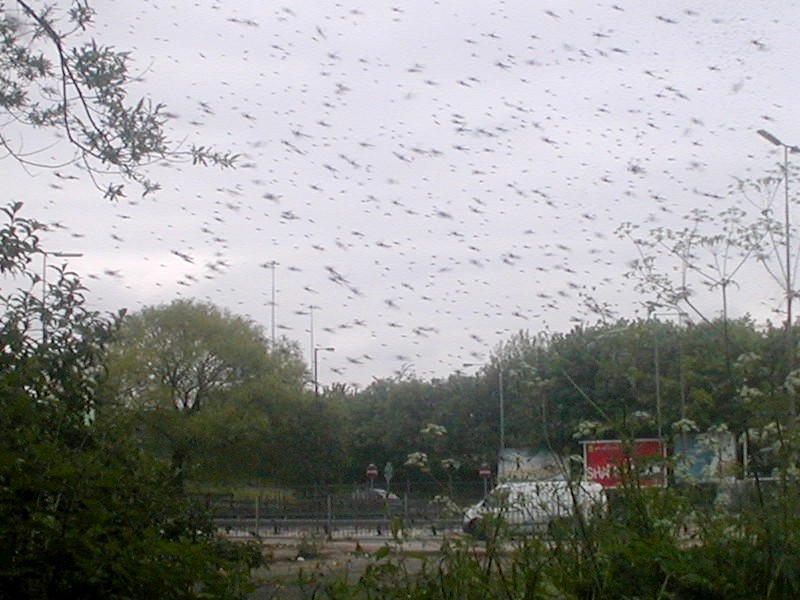
Midges over the Brent at Brent Cross.
Come off the bridge carrying Templehof Avenue over the North Circular and the disused car park is to the left by the roundabout. A slip road, barred by a tube-steel barrier, leads down to an area of tarmac broken by fenced off maple saplings. Beyond there is a large patch of untended sward separated from the river by a line of shrubs.
Until recently the surface of the car park was covered with a layer of ivy and brown moss, which had crept over the area obscuring the white lines demarking individual parking bays. Now the tarmac has been scraped clean, all the vegetation placed in two huge plastic sacks left in the corner by a clump of tufted vetch. The little fenced-in areas around each maple, however, have managed to retain their micro-communities of vegetation. Different species of grasses grow in each plot and while one contains sun-bleached stems of shepherd''s purse, the next nurses a straggly mass of mallow, the purple flowers collapsing into shrivelled blue sacs post-pollination.
Along the car park''s margin, before the two-foot drop down to the riverside path, a battle royal is being fought out between official low-maintenance shrubs and unruly opportunistic weeds with an eye out for new living space. Spiked barbs of Oregon grape huddle together for protection in the face of assault by domestic brambles. The grape, which has no business here in Middlesex, is not doing too well. The holly-like leaves are turning rich red. The grapes, all white, yellow and pink look pretty vulnerable in the face of the threat surrounding them.
A mass of creeping thistle moves in on the flank. Proud purple plumes held in place by neat appressed bracts form clusters at the end of each hairless stem. Well-drilled and ruthless, the thistle can also call on support from stonecrop and stinkweed. It looks like the home side is winning here. Already the ivy is undermining the enemy positions and the crack of numerous snail shells as you walk across to have a closer look suggests a whole army of camp followers in its wake. To the rear, spikes of purple toadflax and shimmering mugwort mark the limits of the offensive.
At the rivers edge, a new and far more dangerous invader holds sway. A colony of Japanese knotweed runs along the Brent for a good fifty yards and it is hard to imagine even the ivy and brambles making a mark against it.
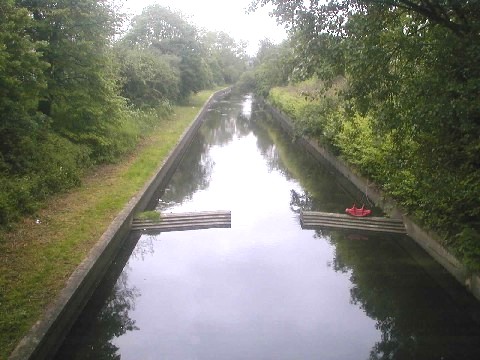
Weir on the Brent at Brent X.Possibly a
remnant of the old Hendon Urban Districtsewage farm.
A heron launches itself from a branch resting mid-stream and flaps heavily up over the roofs of Brent Park Road while the yellow flowers of melilot wobble in the breeze. They look so feeble against the tall, pink shoots of the knotweed. A copper beetle scurries across the hot asphalt while rippling leaves of pseudo-acacia frame a double decker crossing the river mere feet away.
Out on the sward a dense globule of pink milfoil stands, the flowers laced with the fine leaves of the plant. Buttercups spatter the grass further over, adjacent to the fences backing onto back gardens. A wren launches repeated forays out of the dense herbage screening the gardens and coal tits hang off the evergreens planted by the edge of the slip road.
Soon young bipeds will stare through transparent sunscreens shaped like the faces of teddy bears. Ignition keys will cut short the tribal pounding and trolleys chink with bottled beer bound for boxes of artificial winter. The Oregon grape will receive back-up and the thistles will be decimated. A hard-edged parking zone will once more deliver up the multitudes to pay homage to the shopping centre. And the knotweed, that vast cloned lady straddling whole continents? She will remain, her dense shoots lining the concrete-edged river all the way to the Welsh Harp.
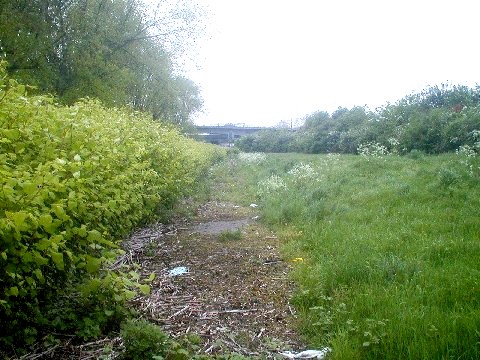
Knotweed extends along the Brent.
This area was once the east end of the Hendon Lake.
Years back, at the beginning of the 20th century the whole Brent Cross area was a veritable moot point for waterways and sewage systems. Hendon Urban District Council had sewage farms, initially on the southbank of the Brent and later on the north. The site was closed in the 1930s, the area''s sewage being pumped down to Mogden Purification Works in Isleworth. From there sludge was pumped up the Bath Road to Perry Oaks (now the site of Heathrow terminal 5) and waste water was discharged into the Thames from Isleworth via a set of vast Penstock Regulators. At one point an aquaduct spanned the Brent carrying waste from the UDC to the site on the southbank. There is a photo of the aquaduct below. Another ran to the immediate south of Sturgess Park and is still visible today, at the north end of the shopping centre''s west carpark.
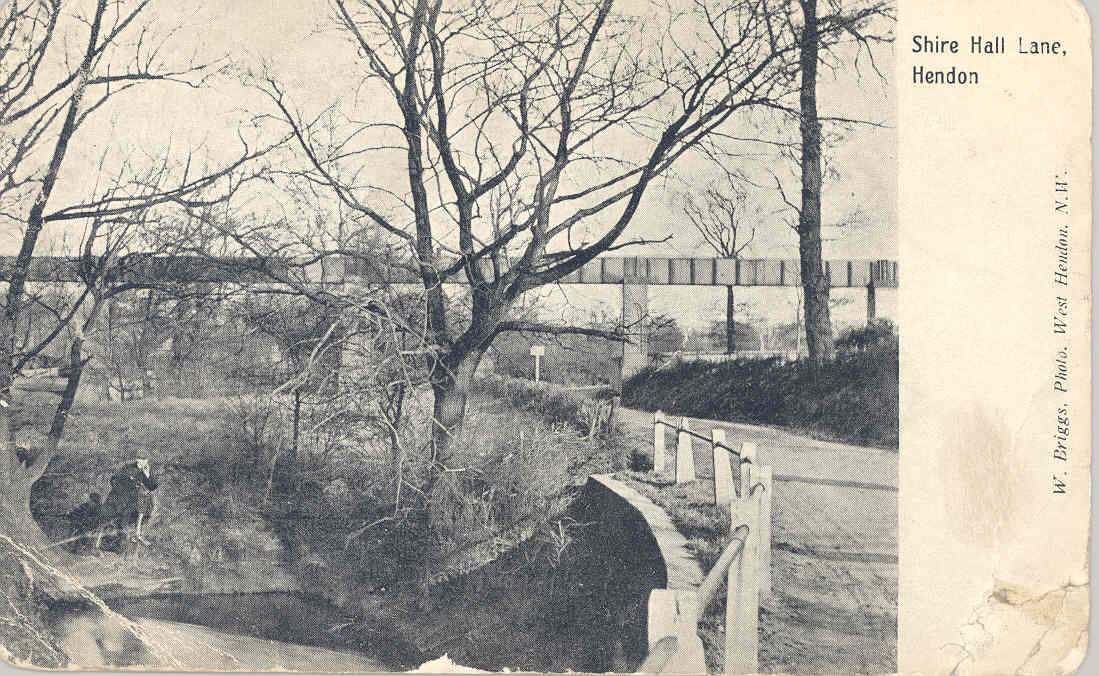
Aquaduct over the Brent as seen from Renters Lane
(now the A406 North Circular)
The viaduct ran across the Brent on what is roughly the route of the A41(T). I often wonder if it is possible the ramp carrying the flyover across the A206 isn''t the original base of the viaduct. Does anybody anywhere know? Or care?
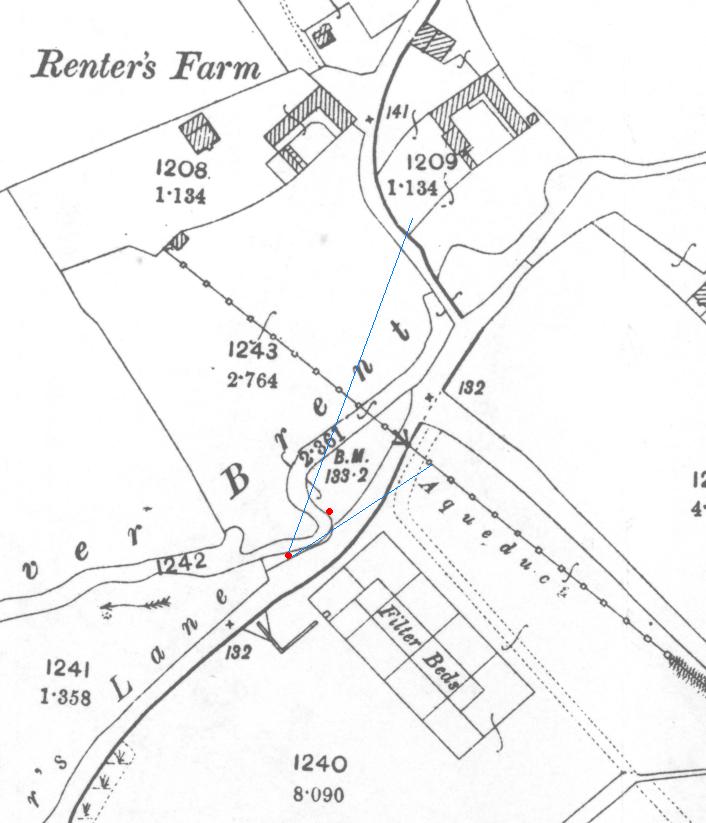
Old OS map showing the aquaduct, and position of camera in photograph above
The Tale of the Clitterhouse Brook
Many streams criss-cross the A406 along its course. These are usually tributaries of the various rivers the North Circular runs alongside at different points.
At one point the A406 runs with the river-valley containing the Pointalls District Allotments - a stream is still visible if you descend off the embankment to the north, just by the bridge carrying the road over the Northern Line. Later the A406 runs alongside the Mutton Brook which flows down between Hampstead and Finchley from Cherry Tree and Highgate Woods. At the point where the A406 turns south-east at Hendon to align itself with the river Brent, Mutton brook runs beneath the road along a tunnel lit by fluorescent lamps to its confluence with that river. Later the Brent will receive the combined waters of the Mitchell (or Slade ) and Harlesden Brooks. These flow under the A406 into the Raphael Estate, not far from Stonebridge Park and run beneath a residential street before entering the Brent. However, these are outside the jurisdiction of this website.
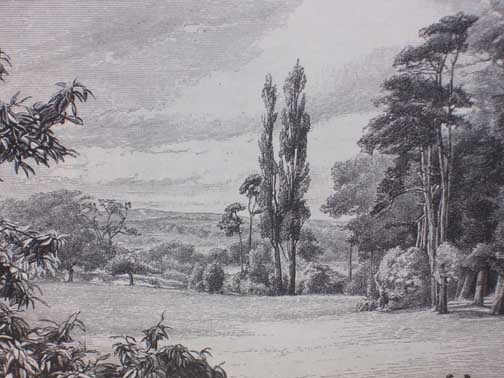 Another barely noticed stream runs beneath the A406 just east of the Holiday Inn and the slip road onto the M1. It then flows along a concrete runnel bounded by knotweed and elder. It runs into the Brent through an angled outlet opposite the multi-storey car-park serving Brent Cross shopping centre. This is the Clitterhouse (or Clutterhouse) Brook. The Clitterhouse Brook has several sources. One trickles out of the claygate sands below Jack Straw''s Castle above West Heath, Hampstead. Having fed both Leg of Mutton pond and the swan pond in Golders Hill park (pictured above, from about 1898) it crosses the Finchley Road, runs under Nant road (Nant is a Welsh word for stream) and runs in a tunnel along the south and west sides of Childs Hill Park.
Another barely noticed stream runs beneath the A406 just east of the Holiday Inn and the slip road onto the M1. It then flows along a concrete runnel bounded by knotweed and elder. It runs into the Brent through an angled outlet opposite the multi-storey car-park serving Brent Cross shopping centre. This is the Clitterhouse (or Clutterhouse) Brook. The Clitterhouse Brook has several sources. One trickles out of the claygate sands below Jack Straw''s Castle above West Heath, Hampstead. Having fed both Leg of Mutton pond and the swan pond in Golders Hill park (pictured above, from about 1898) it crosses the Finchley Road, runs under Nant road (Nant is a Welsh word for stream) and runs in a tunnel along the south and west sides of Childs Hill Park.
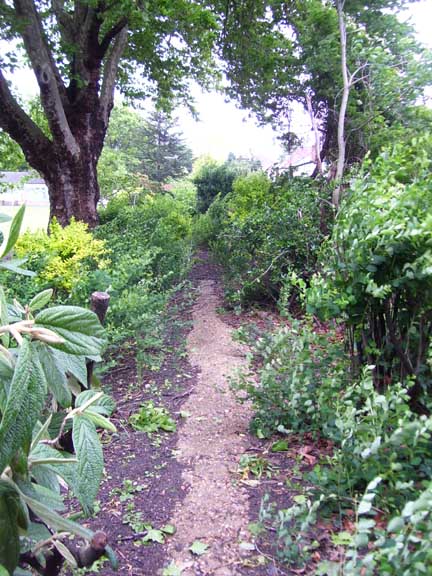
The Clitterhouse Brook runs in a pipe through Childs Hill Park
Here it joins a second stream, which runs down from the direction of Hermitage Lane or West Heath Road. This runs along Granville Road, passing a laundry plant, one of several it once watered. These laundries once gave the street here the nickname Soapsuds Alley.
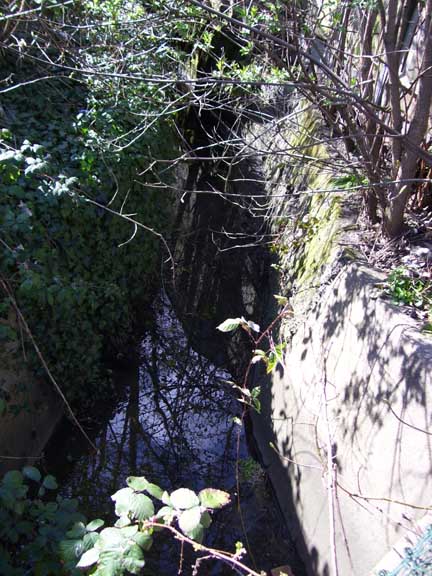
The brook is visible at the north
end of Granville Road
The combined rivers then surfaces momentarily at the north end of Granville Road. The culvert in which it runs is surrounded by sycamore and displays harts-tongue ferns on its concrete edge. I suspect a third source runs along the A41(T) to join the Childs Hill streams close to the southwest corner of Basing Hill Park. The Clitterhouse Brook then runs diagonally across Basing Hill Park, visible in a dip in the grass surface and alongside the Hendon Way and beneath that road, finally surfacing at the edge of the large green space that used to be the Cricklewood aerodrome. Here yet another stream joins the watercourse, flowing out northwards from below the Golders Green Estate. If you poke around in the bushes close to the entrance to the old aerodrome, by the large oak tree across the path from the allotments you will see this stream squirt out of a concrete channel.
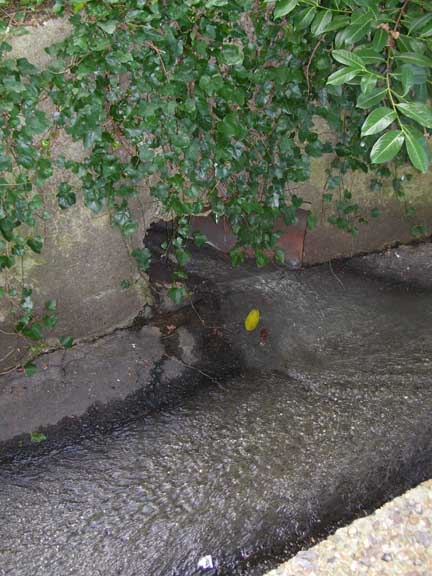
The brook originating somewhere below
the Golders Green estate issues into the
Clitterhouse Brook
At least two more streams join the Clitterhouse Brook before its confluence with the Brent. These run westwards off of the Golders Green Road and are traceable in dips in the ground in the area of Beverley Gardens and Woodville Road though I am not sure yet of their exact course.
With an allotment behind it and edged by young oaks and false acacias, the Clitterhouse here almost attains the rustic ideal. But not so quick! This brook has always been a working river, a tiny Donets-basin serving the needs of the (micro)region.

The Clitterhouse Ditch threads through to the river Brent
Way back, before the advent of the West Middlesex Drainage Scheme our stream watered a parish sewage farm just along here, close by where Tescos now have their store. Later the farm was shifted across the Brent to where the shopping centre now is. The roads hereabouts still display manhole inspection covers marked MCC (Middlesex County Council) and HBC SW (Hendon Borough Council Sewage Works).
it is possible the line of tall poplars alongside the children''s'' playground, where the footpath turns north towards the Brent marks the old boundary of this sewage farm. The Clitterhouse stream runs below ground for a while, before trickling out above ground in a small gully alongside a school. It looks very pretty here wrapped in various weeds and grasses. Then it runs off towards its encounter with the North Circular Road.
On June 20th 1964 a crane owned by Cleveland bridges collapsed off the new flyover onto a coach carrying a works outing from Feltham to Southend. seven of the coach passengers died...
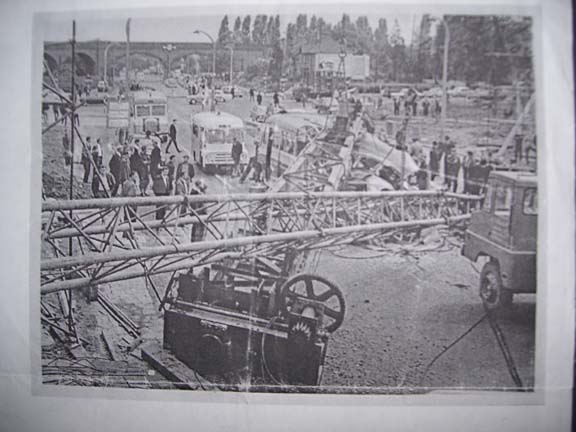
The accident site: the crane has flattened
part of the roof of the coach...
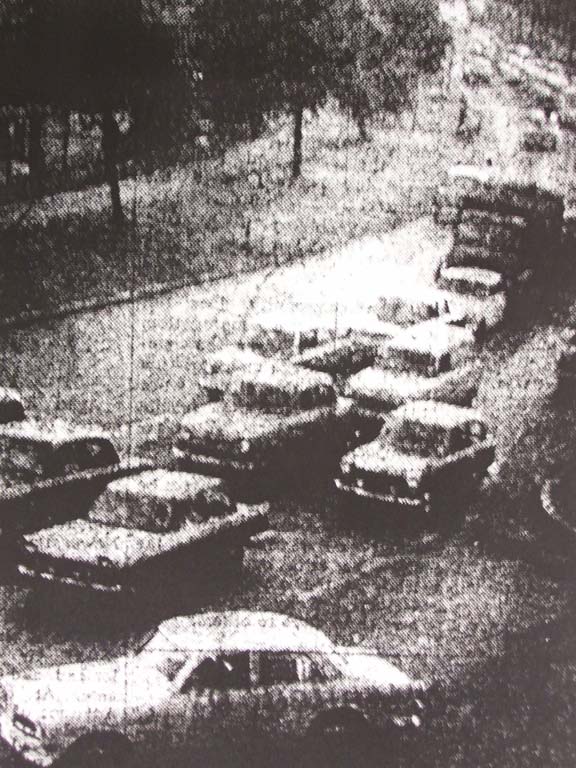
Cars jam up the Watford Way: note the grass verges on the farside of the road - now long gone
Fantasia: Summer 2004
A gust rises from somewhere out beyond Watford. It ruffles the Yorkshire Fog growing over at Bushey Heath. As it moves south a Lotto sign swings on the pavement outside a tobacconists in Burnt Oak and a used ticket scrapes the platform at Mill Hill Broadway. Over on Golders Green Road the For Let signs rattle above vacant shop windows as the air bustles past the lit restaurants.
Meanwhile, at that time-honored crossing where a major route north intersect an east-west arterial road the Regional Shopping Centre begins to empty, most shoppers leaving by the upper-ground exits, bound for the car park.
For an hour or so the nine bus routes have been delivering up less and less in the way of shoppers. Now they carry these same people home once more. As they pull out along Prince Charles Drive every window holds a tired face. Shoppers and staff cram the wheezing red vehicles as they hiss along by the river. Assistants stare out at the Rose of Sharon and the lime trees still lit by the slanted sunbeams.
Down at the old disused car park at the complex''s western edge the sward has been trimmed. Even the patches of weed around the saplings have gone. Look further west to where the M1 rises like an approaching war above the passivity of the treetops. Here a concrete bridge juts across the river basin, thrusting north. Each second a steel-wrapped life surges across -each contained within its private dream. It is difficult to believe these cars hold human life. Rather they are part of some mute yet clearly observable process of intention - akin, say, to the mound-life of ants or termites. There is an inflexibility here as the cars follow on, one behind the other. They are bounded in their co-ordinates by lit signs and law. The city delivers the drivers up to their dreams. yet nobody could''ve dreamed this city. Nobody knows where it is.
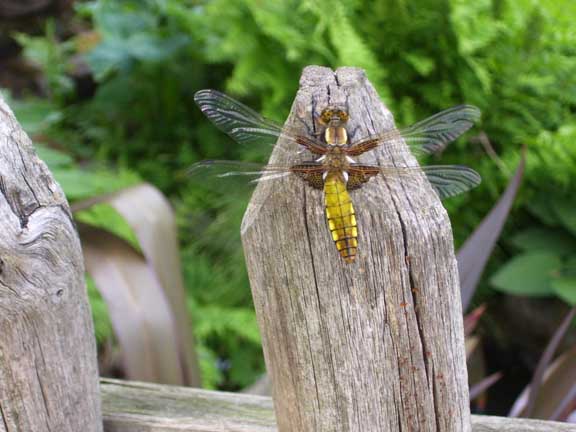
Libellula depressa L. waiting on its perch
The slip road runs across the river. It takes a second to cross and is therefore not known. Even the civil engineers could not see the implications or the structural faults - the moss-lined cracks in the pre-moulded plates, the water dripping down from the road surface, staining the flank of the bridge.
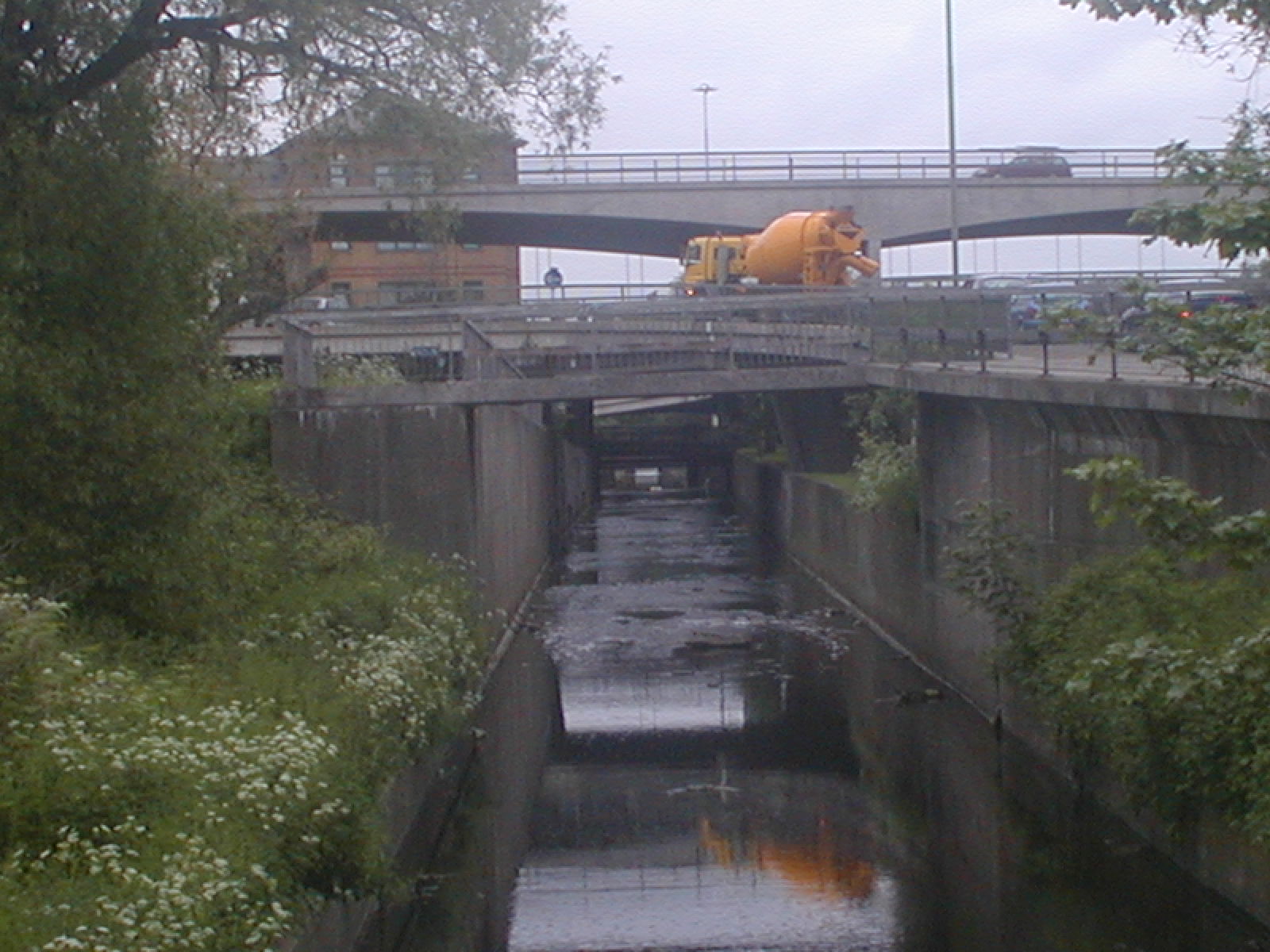
The stems of knotweed rustle and sway. A heron perches on a bough lying in the barren, weedless bottom of the Brent. Everywhere balls of midges dance their complex pavanne.
Out on the gridded zone between the ribbed block of John Lewis and the hermetic ruffle of grass on the aquaducts, a cyclist crosses in the growing dark. Hours later solitary persons still strike across that car park. At ten a man cycles through from the 1930s houses to the north, cutting through to the bungalows built originally for the workers at the photographic chemical works. This last is long gone; the drive that once served its main gates now sealed with sheets of plywood and thick belts of conifers. There is a multistorey car park and a delivery bay where alum amd silver chlorate were once produced.

